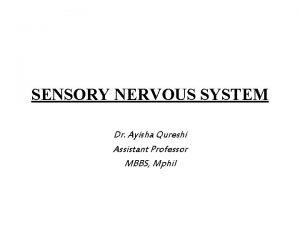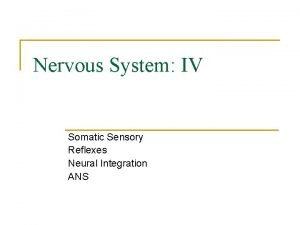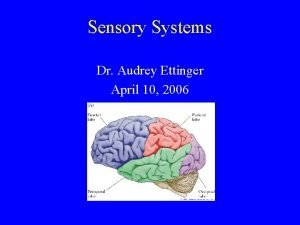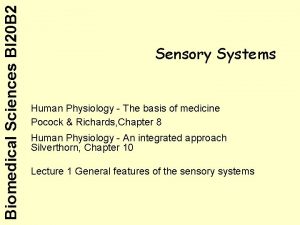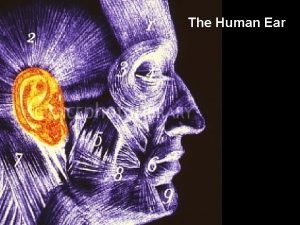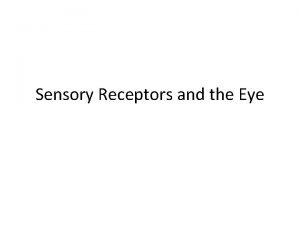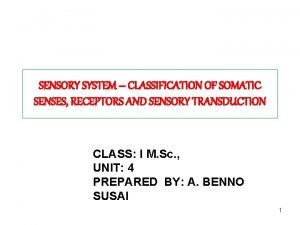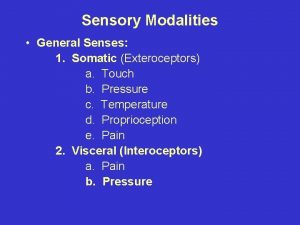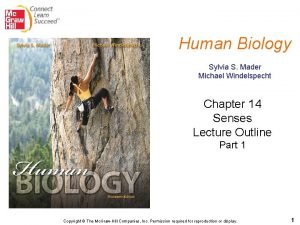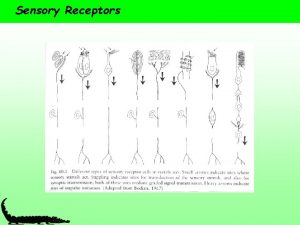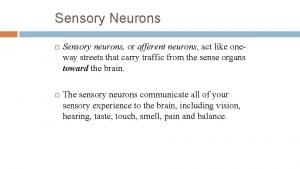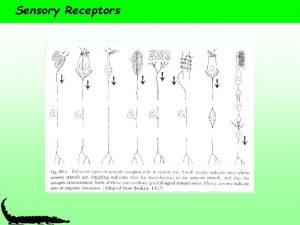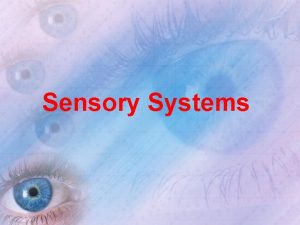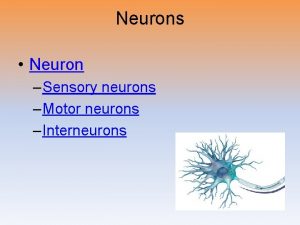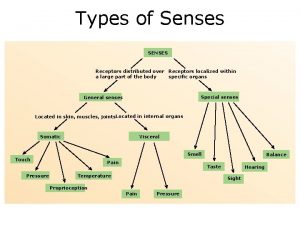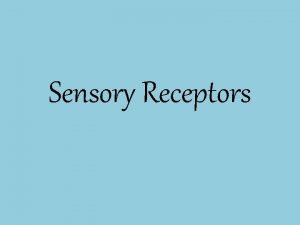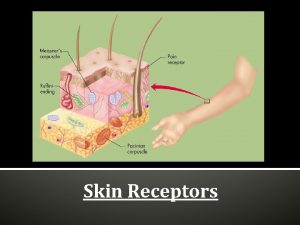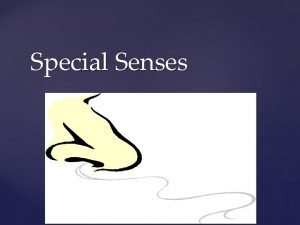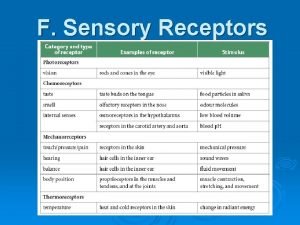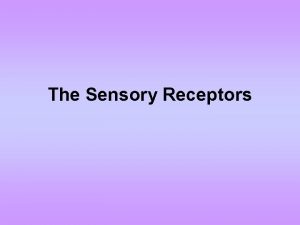The Senses Sensory Receptors Sensory receptors neurons that















- Slides: 15

The Senses

Sensory Receptors • Sensory receptors = neurons that react directly to stimuli from the environment. – Light, sound, motion, chemicals, pressure and changes in temperature

5 categories of sensory receptors • Pain receptors = react to chemicals released by damaged cells • Thermoreceptors = detect variations in temperature • Mechanoreceptors = sensitive to touch, pressure, stretching of muscles, sound and motion • Chemoreceptors = sensitive to chemicals (taste/smell) • Photoreceptors = sensitive to light

Vision • Eyes are the organ used to sense light • Lights enters through the cornea which helps focus the light • The iris is at the back of the eye and is the colored part • In the middle of the iris is a small opening called the pupil • The iris can adjust its size to control the amount of light the pupil lets in the eye.

Lens • Behind the iris is the lens. • The lens changes its shape to help you adjust your eyes’ focus to see near or distant objects • The lens focuses the light onto the retina

Retina • The retina receives the light and turns the light energy into nerve impulses • It is lined with photoreceptors that convert the light to nerve impulses – Two types of photoreceptors • Rods = sensitive to light but not color • Cones = respond to light of different colors producing color vision

Video how light enters your eye • http: //www. teachertube. com/video/how-light -enters-the-eye-542

Ears • Your ears has two functions: hearing and balance • Sound is vibrations in the air. • Your ears can distinguish both pitch and loudness of those vibrations

Hearing • Vibrations enter your auditory (ear) canal and cause your tympanum (ear drum) to vibrate • Three bones, the hammer, anvil and stirrup transmit the vibrations to the oval window • The vibrations create pressure waves n the fluid filled cochlea • The tiny hair cells which line the cochlea move due to the waves and cause a nerve impulse

Balance • Semicircular canals are located above the cochlea • they have two small sacs located behind them and together they monitor the position of you body and head

• The semicircular canals and sacs are filled with fluid and lined with hairs • When your head changes positions the fluid moves because of it • The fluid bends the hairs and it moves, which sends impulses to the brain • The brain uses these impulses to determine body motion and position.

Hearing video • http: //www. youtube. com/watch? v=qgdqpo. Pb 1 Q

Smell and Taste • Both smell and taste is the organs sensing chemicals • smell is done by chemoreceptors in your nasal passage that send impulses to the brain • Most of what we think is taste is actually smell

• Taste is done by chemoreceptors called taste buds • Taste buds are mainly found on the tongue, but some are found throughout the mouth • Taste is detected in four categories: – Salty, bitter, sweet, and sour

Touch • Touch is not found in one particular place • All you skin is sensitive to touch • Skin has sensory receptors that respond to temperature, touch and pain • Your face, fingers and toes have a larger number of receptors and therefore are more sensitive to touch
 Special vs general senses
Special vs general senses What is the difference between somatic and special senses
What is the difference between somatic and special senses Characteristics of sensory neurons
Characteristics of sensory neurons Receptive fields of sensory neurons
Receptive fields of sensory neurons Proprioception autism
Proprioception autism Audrey ettinger
Audrey ettinger Classification of sensory receptors
Classification of sensory receptors Classification of sensory receptors
Classification of sensory receptors Dermatome map
Dermatome map Names of parts of ear
Names of parts of ear Sensory receptors in eye
Sensory receptors in eye Sensory receptors
Sensory receptors Classification of somatic senses
Classification of somatic senses Exteroceptors examples
Exteroceptors examples Sensory receptors
Sensory receptors Proprioception vs mechanoreceptor
Proprioception vs mechanoreceptor



